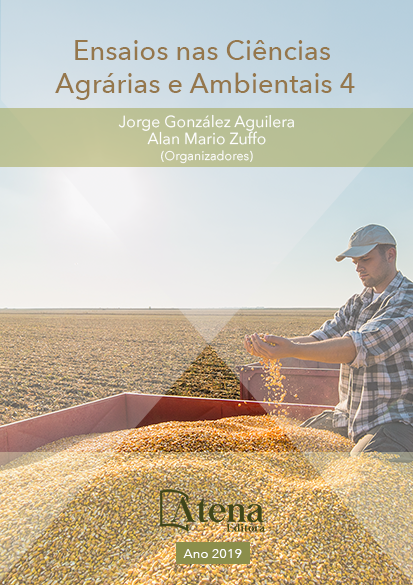
SISTEMA DE SUGESTÃO DE DENSIDADE PARA PLANTAÇÕES DE BANANA UTILIZANDO VEÍCULOS AÉREOS NÃO TRIPULADOS
Este artigo apresenta um sistema
para analisar imagens de alta resolução obtidas
através de veículos aéreos não tripulados
(VANTs) para geração de mapas sugestivos
de densidade em plantações de banana.
O principal objetivo do sistema é auxiliar o
agricultor no gerenciamento e planejamento
da população de plantas, visando manter a
densidade de plantação ideal. A solução aqui
proposta pode ser dividida em duas etapas
distintas, sendo: Análise de textura através
da técnica segmentation based fractal texture
analysis (SFTA) e classificação dos blocos
através de support vector machine (SVM). Para
validar a solução proposta, uma aplicação foi
feita em uma plantação de bananas na região
de Turvo - SC. Através de uma análise visual,
foi possível verificar que o resultado obtido na
aplicação real representou de forma adequada
a realidade. Entende-se que o sistema proposto
ainda demanda novas validações em solo,
porém foi possível perceber que o algoritmo
possui potencial, pois atendeu os objetivos do
trabalho.
SISTEMA DE SUGESTÃO DE DENSIDADE PARA PLANTAÇÕES DE BANANA UTILIZANDO VEÍCULOS AÉREOS NÃO TRIPULADOS
-
DOI: 10.22533/at.ed.40719160122
-
Palavras-chave: Atena
-
Keywords: Atena
-
Abstract:
This paper presents a system
that aims to analyze high-resolution images
acquired by unmanned aerial vehicles (UAVs)
for the generation of density suggestive maps for
banana plantations. The main system’s objective
is to assist the farmer in the management and
planning of the population, in order to maintain
optimal planting density. The solution proposed
can be divided into two steps, being: texture
analysis through segmentation based fractal
texture analysis (SFTA) and block classification through support vector (SVM). In order
to validate the proposed solution, an application was made in a plantation in Turvo
- SC. Through a visual evaluation, it is possible to verify that the result obtained in
the real application adequately represented the reality. It is known that the proposed
system demands new validations in soil, but it is visible that the algorithm has potential
since the main objectives of this work were complete successfully.
-
Número de páginas: 15
- Roderval Marcelino


